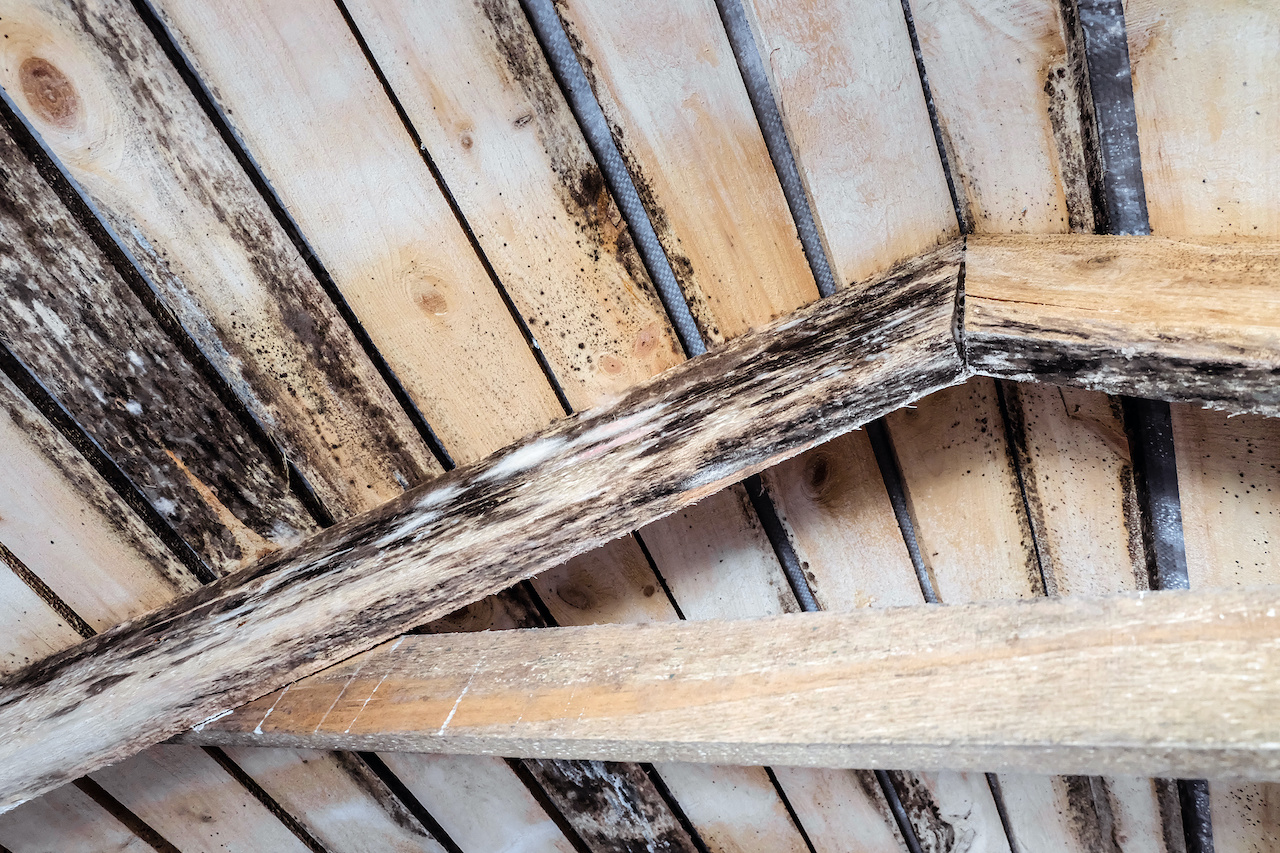It comes as no surprise that mold is one of the most dangerous and common fungi that we can encounter in our house. In fact, according to research, more than 45 million buildings in the US have unhealthy levels of mold. And while mold is commonly associated with drywall and leaking pipes, it can also be found on other moist surfaces. So what happens if you find mold on wood? Should you remove it yourself or contact a mold cleaning company?
What Is Mold?
Similar to mushrooms and yeast, mold is a fungus that grows on plants, fabric, wood, and organic materials. Its main purpose is to recycle dead organic matter by consuming it over time. But while that is great for forests, in most cases, it is detrimental to human health. As a matter of fact, black mold is the main cause of asthma or other respiratory conditions.
Even though you can find mold near pipes, windows, and drywall, it can also grow on wood. Why? Because wood naturally soaks up and retains water, making it a perfect environment for mildew and mold. And since wood is much harder to check and remove, mold can grow on it for months before discovery.
How to Remove Mold From Wood?
If you’re dealing with less than 10 square feet of mold, you may be able to clean it without the help of a mold remediator as defined below. However, you should pay attention to a few key things. Firstly, if you suffer from a disorder such as asthma or allergies, don’t clean the mold by yourself. Even if you don’t have an autoimmune condition, you should still make sure to wear protective gear such as eye protection, gloves, and a disposable respirator.
Secondly, if you have children that are under a year old, remove them from the premises while you’re working. Similarly, if anyone in your home has chronic lung disease or is immunodeficient, they should also vacate the area. Lastly, make sure you clean the work area with a cloth and soapy water. Make sure to remove any furniture you can’t clean, as well.
Protective Gear
If you are dealing with a mold infestation on wood, you will need to get rid of it as soon as possible. But before you jump in and start cleaning, you need to wear protective gear to avoid skin contact. Wear rubber gloves, safety goggles, and an air mask to prevent spores from getting inside your lungs. And if you want to use chemicals, you should also wear protective outerwear to guard your clothes.
Vacuum
In order to remove most of the mold spores, you must vacuum the area using a machine equipped with a HEPA filter. Once that’s done, simply empty the vacuum bag or canisters into a plastic bag and seal it. Remember to dispose of the plastic bag as far away from the house as possible, or else you risk further contamination.
Spray It
Next up, you will need to use a topical biocide or similar. All you have to do is spray the affected area, wait a few minutes, wipe it off and repeat the procedure. If everything works as intended, the black mold stains will start to lighten up slowly but surely. Keep in mind that while the wood will look better, it will never look as good as it originally did.
The other option is to spray a disinfectant. That would ‘kill’ any remaining mold spores not removed from the soapy water wipe down and the HEPA vacuuming.
After the area dries, you can check for additional water infiltration issues that may cause mold. You can even install new insulation to protect the wood from moisture and mold contamination.
Final Thoughts
Overall, everybody can handle a small mold infestation by using mold removers and vacuums. However, if you are dealing with large contamination, you will need to call a professional contractor such as Mold Solutions. Our highly experienced team is ready to deal with all your mold problems in a timely manner. And with over 2,800 happy customers, we are proud to be one of the highest-rated mold removal companies in the Chicago and St. Louis area.
So why waste your time and risk your family’s health? It’s time to give Mold Solutions a call and relax while we get the job done!








